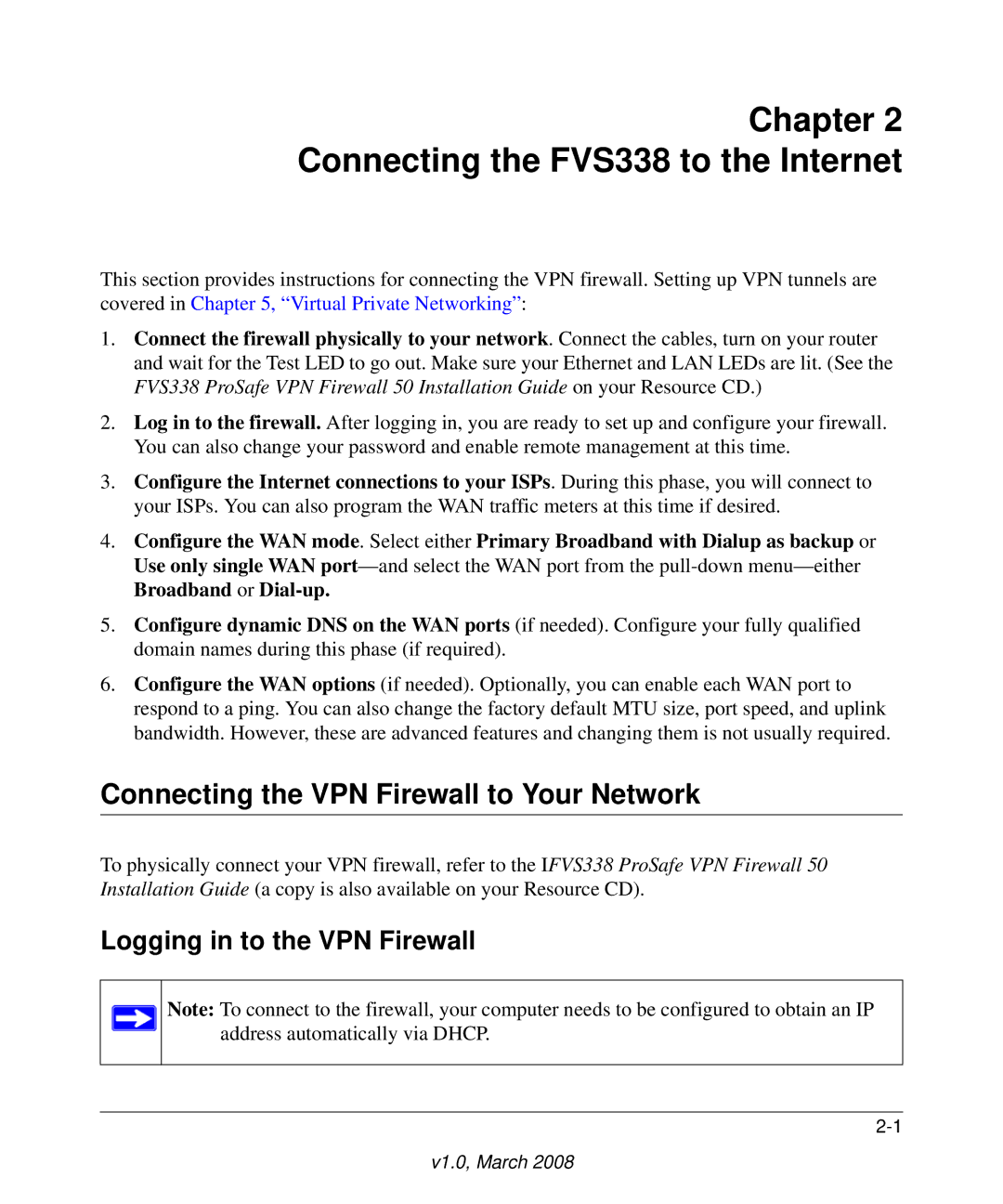
Chapter 2 Connecting the FVS338 to the Internet
This section provides instructions for connecting the VPN firewall. Setting up VPN tunnels are covered in Chapter 5, “Virtual Private Networking”:
1.Connect the firewall physically to your network. Connect the cables, turn on your router and wait for the Test LED to go out. Make sure your Ethernet and LAN LEDs are lit. (See the FVS338 ProSafe VPN Firewall 50 Installation Guide on your Resource CD.)
2.Log in to the firewall. After logging in, you are ready to set up and configure your firewall. You can also change your password and enable remote management at this time.
3.Configure the Internet connections to your ISPs. During this phase, you will connect to your ISPs. You can also program the WAN traffic meters at this time if desired.
4.Configure the WAN mode. Select either Primary Broadband with Dialup as backup or Use only single WAN
5.Configure dynamic DNS on the WAN ports (if needed). Configure your fully qualified domain names during this phase (if required).
6.Configure the WAN options (if needed). Optionally, you can enable each WAN port to respond to a ping. You can also change the factory default MTU size, port speed, and uplink bandwidth. However, these are advanced features and changing them is not usually required.
Connecting the VPN Firewall to Your Network
To physically connect your VPN firewall, refer to the IFVS338 ProSafe VPN Firewall 50 Installation Guide (a copy is also available on your Resource CD).
Logging in to the VPN Firewall
Note: To connect to the firewall, your computer needs to be configured to obtain an IP address automatically via DHCP.
